If you ever have a chance to visit the great state of Utah, I highly recommend checking out Bear River Migratory Bird Refuge. This place is awesome, there's an easy birding drive to take and you can use your car as a blind to get great looks at western birds. You can also use the drive to get photos of grebes, ducks, pelicans and...

...swallows.

Lots and lots of swallows. If you are birding in a place with all sorts of swallows aka birds who fly around with beaks wide open eating only insects, take note. It usually means that there are a lot of insects for them to eat.

And lots of insects there are--mostly in the form of non biting midges. This was swarm that took over my rental car's windshield when I paused to get some photos. Most of the bugs you encounter are non biting...there are a few who do, but when you see clouds along the road, they are generally non biting midges. Don't let this photo frighten you from visiting this place. The midges for the most part will leave you alone and the birding is beautiful. You can also stay in your car the entire time if you really want to avoid them, but I like to step out.

I had to chuckle, as I would try to get photos of birds around the refuge, midges kept getting in the shot. All the black dots in the above photo of the marsh wren? Midges! Though there are oodles of midges and they can be a source of food for all sorts of insect eating birds, especially swallows, there is a challenge. You can have all the food you want, but if you want to raise chicks, you need a safe place to do it.

This is the outside of the visitor center of Bear River Migratory Bird Refuge--all of the birds in the photo are cliff swallows and they have built mud nests in every corner they can find since it's one of the few building around that offers shelter for their nests and safety from ground predators.

Here's a cliff swallow sitting on a partially completed nest. If you have kids and they give you any guff one day, just say, "Hey, at least I didn't make your bedroom out of mud and my own saliva. How'd you like to grow up in that?" The nests are jammed packed but there's still plenty of insects to allow for more nesting.

Then I found this little structure near the auto tour. I'm not sure if this originally was meant as a shelter for people and taken over by swallows or if this was built specifically for them. Either way, what a cool idea to build a shelter for cliff swallows to use. If I had a cabin on a lake, I'd totally make one for these insect eating birds. Might even discourage them from nesting around light fixtures or other areas you'd rather not have them nesting on.

It was hypnotic to watch the little cliff swallows come and go from the little mud cups. These are highly social bird and have no problem nesting side by side...so long as there is plenty of food.
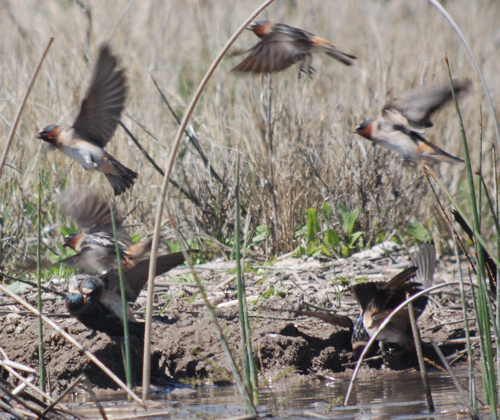
As I went around the refuge, I would find muddy patches with packs of swallows gathering mud for nest construction. Some birds, like those in the lower left hand corner got so into the spirit of things, they mated right there.

It cracks me up to watch cliff swallows on the ground when they gather mud. They keep their wings up in the air. It's almost as if it's a reminder that they don't normally perch on the ground and they need to be back in the air stat. Although, I wonder if the behavior evolved to prevent them from getting mud on the tips of their long wings?

Even though this was in Utah, cliff swallows are all over the United States, so if you wanted to experiment with making a cliff swallow nesting shelter, you could give it a go. I don't think they are in particular trouble habitat wise, so it's not like you need to do it like purple martins, but if you enjoy them, I'm sure they'd appreciate it. We have quite a few it the Twin Cities. When we do canoe paddles on the river, just about every bridge is loaded with cliff swallow nests. They look different from barn swallows, they don't have the deeply forked tail and they have that blond unibrow look to their face.
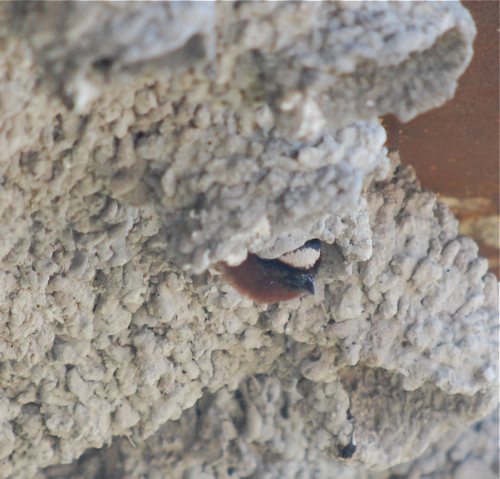 Cute little swallows.
Cute little swallows.


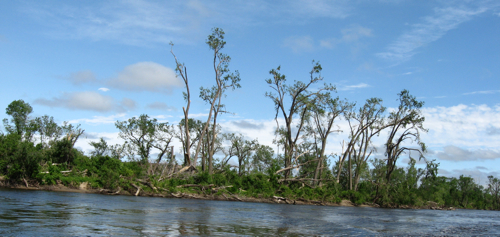
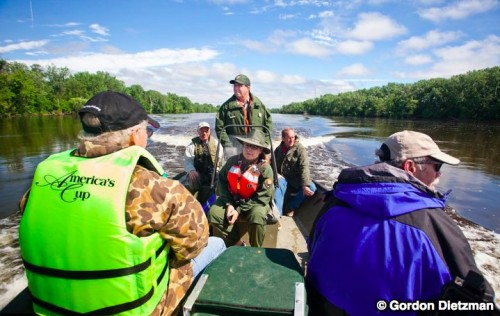
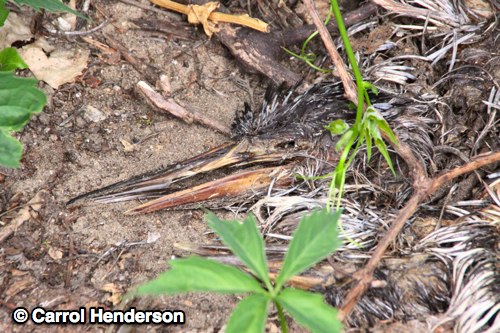
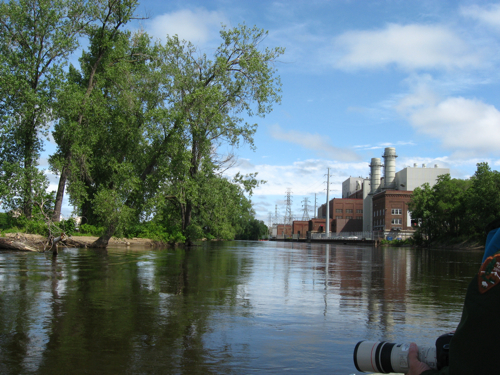
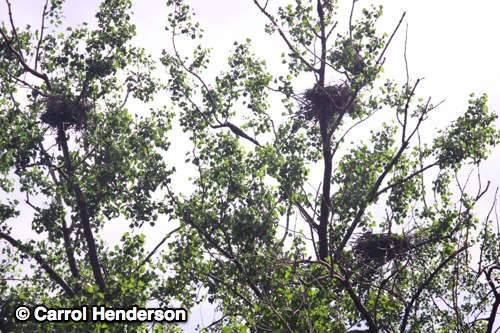
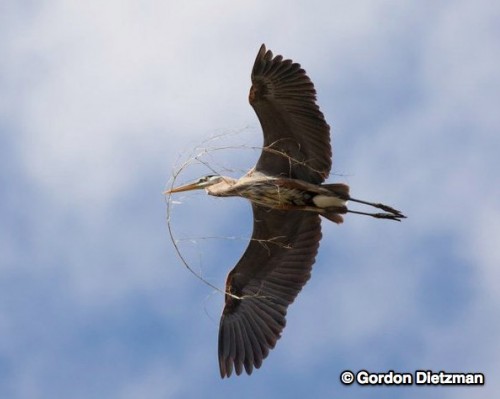
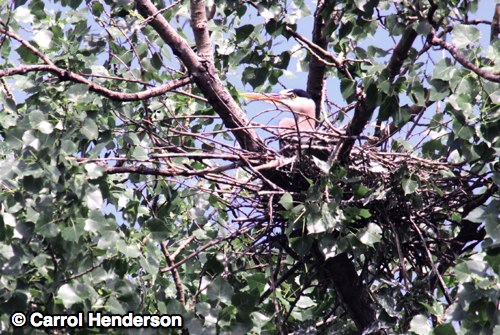
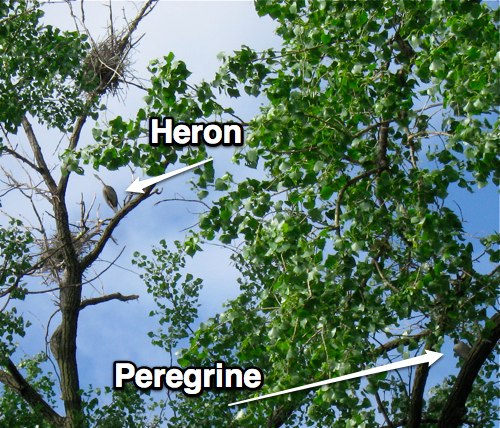
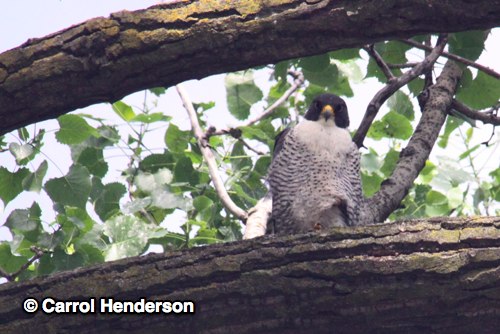
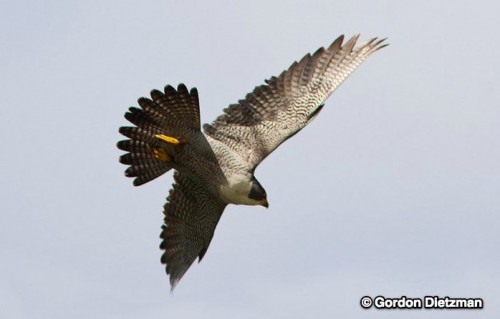
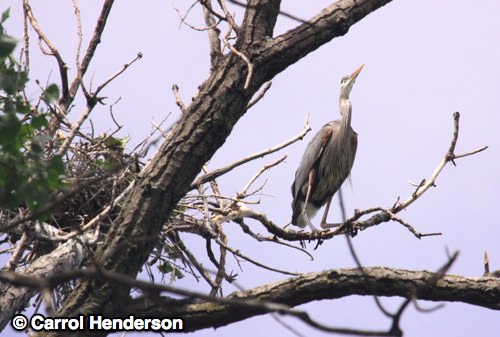
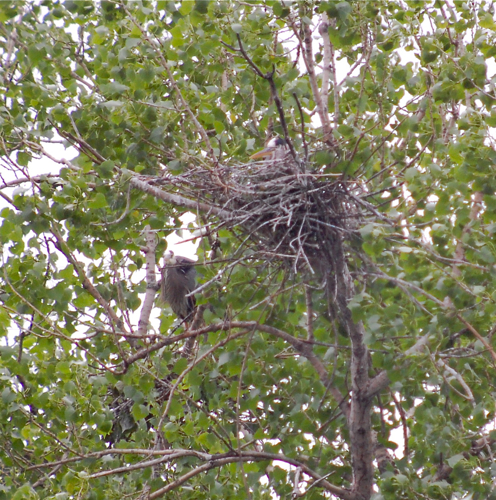





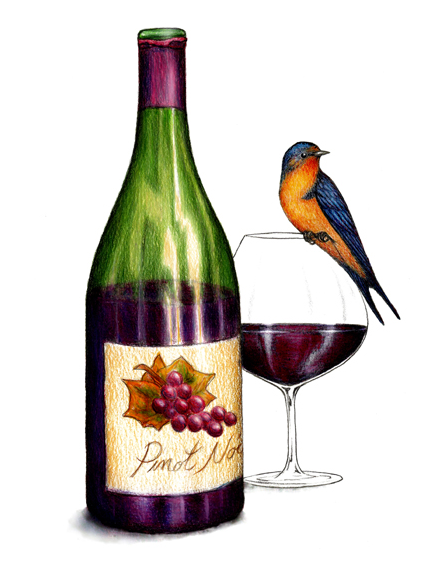
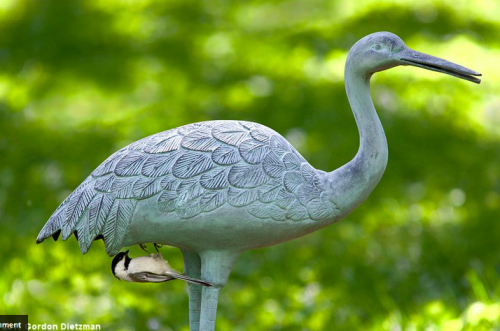 My coworker and fellow Park Ranger
My coworker and fellow Park Ranger 
